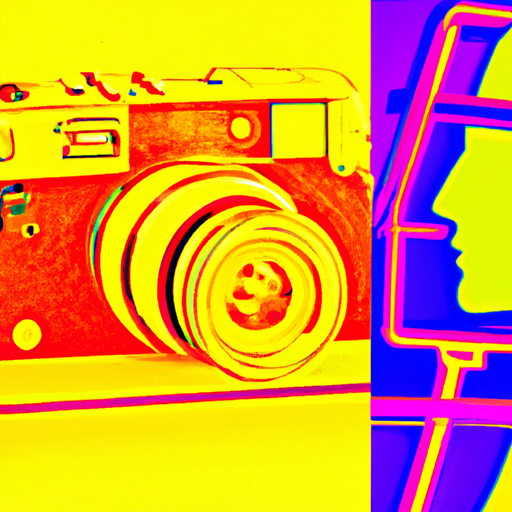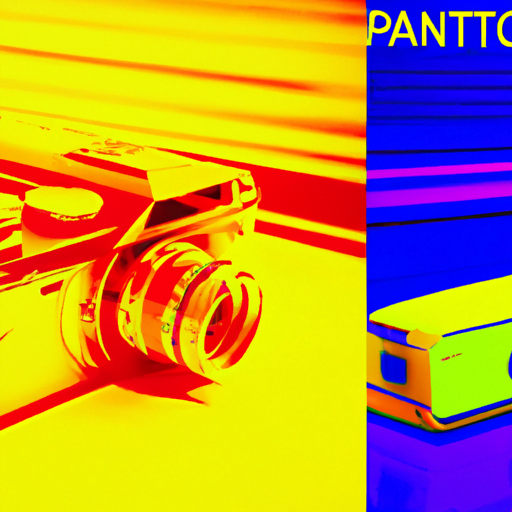
-
Table of Contents
Futuristic Design: Merging Technology and Creativity

In today’s rapidly evolving world, technology has become an integral part of our lives. From smartphones to smart homes, we are surrounded by innovative solutions that make our lives easier and more efficient. This technological revolution has also had a significant impact on the field of design, pushing the boundaries of creativity and opening up new possibilities. Futuristic design is a concept that merges technology and creativity to create innovative and forward-thinking solutions. In this article, we will explore the fascinating world of futuristic design and its implications for the future.
The Evolution of Design
Design has always been influenced by the prevailing technological advancements of the time. From the invention of the printing press to the rise of the internet, each technological leap has shaped the way we approach design. In recent years, the rapid development of technologies such as artificial intelligence, virtual reality, and 3D printing has revolutionized the design industry.
One of the key aspects of futuristic design is the integration of technology into everyday objects. For example, smart homes are becoming increasingly popular, with features such as voice-controlled lighting, automated temperature control, and security systems. These innovations not only enhance the functionality of our living spaces but also create a more immersive and personalized experience.
Case Study: Tesla
Tesla, the electric car manufacturer, is a prime example of how futuristic design can revolutionize an industry. By combining cutting-edge technology with sleek and minimalist design, Tesla has redefined the concept of a car. The Tesla Model S, for instance, features a large touchscreen display that controls almost every aspect of the vehicle, from navigation to entertainment. This integration of technology not only enhances the driving experience but also sets Tesla apart from traditional car manufacturers.
Furthermore, Tesla’s commitment to sustainability is reflected in its design choices. The use of electric power instead of fossil fuels not only reduces carbon emissions but also allows for innovative design solutions. For example, the lack of a traditional combustion engine allows for more interior space and a unique design aesthetic.
The Role of Artificial Intelligence
Artificial intelligence (AI) is another key component of futuristic design. AI has the potential to revolutionize the design process by automating repetitive tasks and providing designers with valuable insights. For example, AI-powered design tools can analyze large amounts of data and generate design recommendations based on user preferences and trends.
One area where AI is already making a significant impact is in user experience (UX) design. AI algorithms can analyze user behavior and preferences to create personalized and intuitive interfaces. This not only improves the user experience but also allows designers to create more efficient and effective solutions.
Creating Immersive Experiences
Futuristic design is not limited to physical objects; it also extends to creating immersive experiences. Virtual reality (VR) and augmented reality (AR) technologies have opened up new possibilities for designers to create interactive and engaging experiences.
For example, architects can use VR to create virtual walkthroughs of buildings before they are constructed, allowing clients to experience the space and make informed decisions. Similarly, retailers can use AR to create virtual fitting rooms, allowing customers to try on clothes without physically being in the store.
The Future of Futuristic Design
As technology continues to advance at an unprecedented pace, the possibilities for futuristic design are endless. Here are some key trends that are likely to shape the future of design:
- Integration of wearable technology into everyday objects
- Advancements in 3D printing, allowing for more complex and customizable designs
- Increased use of biometric data to create personalized experiences
- Further integration of AI into the design process
- Exploration of new materials and sustainable design solutions
It is clear that futuristic design has the potential to transform industries and improve our daily lives. By merging technology and creativity, designers can create innovative solutions that push the boundaries of what is possible. Whether it is through the integration of AI, the use of virtual reality, or the exploration of sustainable materials, the future of design is exciting and full of possibilities.
Conclusion
Futuristic design is a fascinating concept that merges technology and creativity to create innovative and forward-thinking solutions. From smart homes to electric cars, futuristic design has the potential to revolutionize industries and improve our daily lives. By embracing technologies such as artificial intelligence, virtual reality, and 3D printing, designers can push the boundaries of what is possible and create immersive and personalized experiences. The future of design is exciting, and it is up to designers to embrace these technologies and shape the world of tomorrow.
